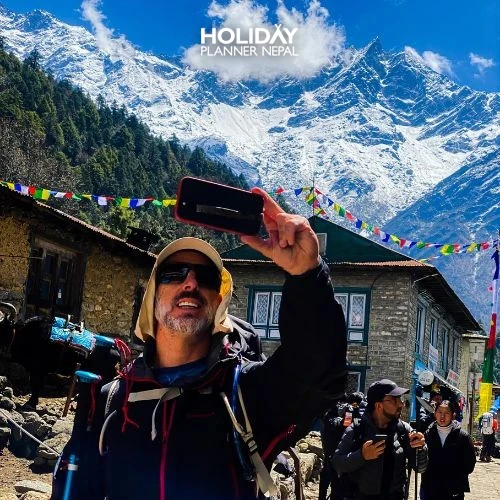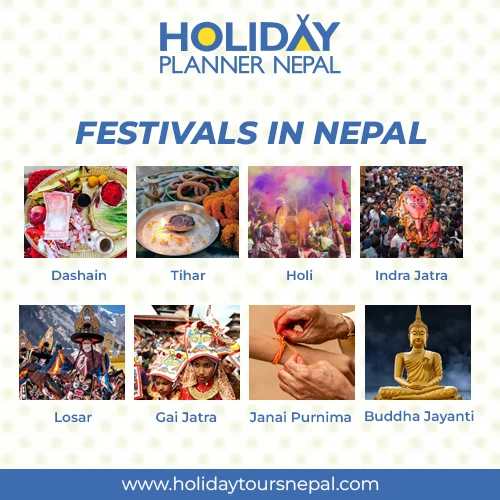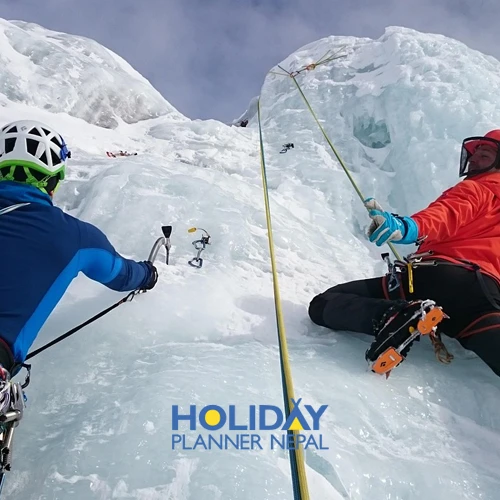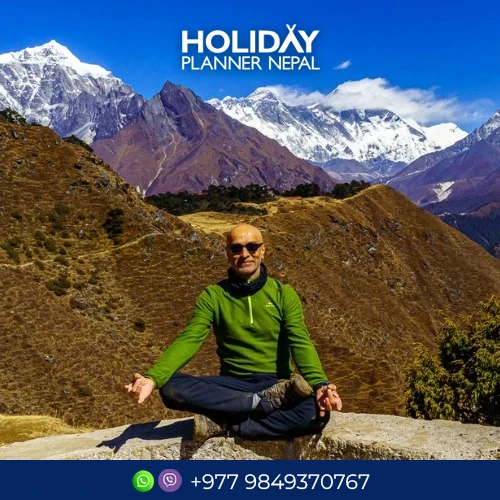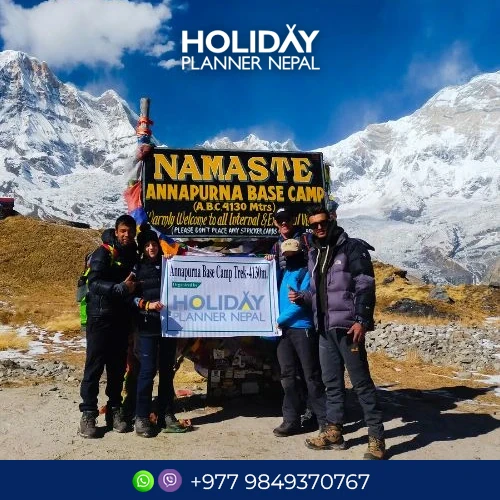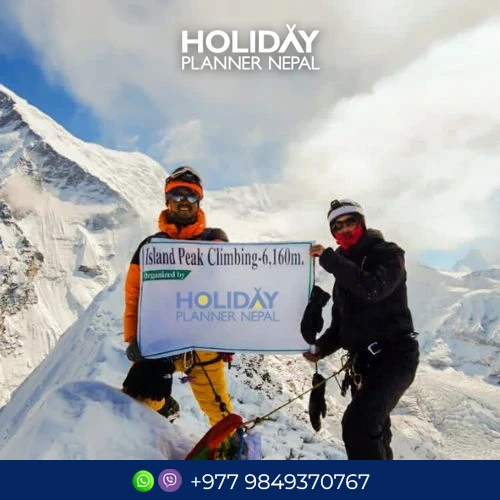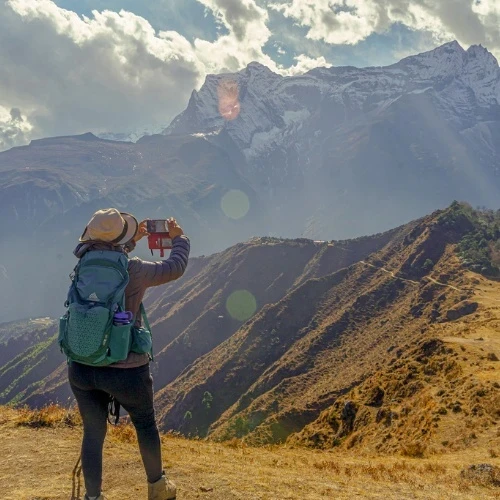Tourist Bus Tickets Nepal
1packagesHiking In Nepal
2packagesOld Age Travelers
Voluntourism in Nepal
Special Interest Tour in Nepal
3packagesFestivals In Nepal
Adventure Sports in Nepal
2packagesTrekking In Nepal
70packagesWildlife Safari In Nepal
6packagesYoga Tour in Nepal
2packagesHelicopter Tour in Nepal
5packagesFamily Holiday in Nepal
6packagesPeak Climbing in Nepal
5packagesNepal Tour Packages
12packagesOne Day Activities in Nepal
17packages
Nepal
Welcome to the land of the Himalayas and the birthplace of Gautam Buddha.
Nepal, also known as the Federal Democratic Republic country of Nepal, lies in south Asia between 26° and 31° N latitudes and longitudes 80° and 89° E. It is a landlocked country surrounded by China to the north and India to the south, east, and west. The total area of Nepal is 147,181 sq. km, with the Himalayan range in the north, the hilly region in the center, and the plain Terai in the south.
Similarly, the capital city of Nepal is Kathmandu, which is also home to seven UNESCO world heritage sites, including the Pashupatinath temple, Bouddhanath Stupa, Kathmandu Durbar Square, Swayambhunath Stupa, Changu narayan temple, Bhaktapur Durbar Square and Patan Durbar Square.
The Himalayan kingdom of Nepal is home to the world's highest mountain, Mount Everest (8,848.86 m/ 29,031.7 ft). The supreme country of Nepal is also the birthplace of Gautam Buddha, also known as Light of Asia and the founder of Buddhism. Nepal is also recognized globally by the brave Gurkha or Gorkhali regiments, the commanding force in the Nepal Army, Indian Army, and British Army.
Similarly, the country is a multicultural and multiethnic country where 125 distinct ethnic groups live. Almost 123 languages are spoken in Nepal, representing the number of indigenous and folk religions followed by the people. Hinduism, Buddhism, Islam, and Christianity are some of the prevailing religions followed by the Nepalese. This harmonious blend makes this country diverse, peaceful, and culturally rich.
The major cities of Nepal are Kathmandu, Bhaktapur, Lalitpur, Birjung, Dharan, Hetauda and Nepaljung. These places are the best locations for tourists to explore, learn, and immerse themselves in Nepal's natural, cultural, and religious aspects. Chitwan National Park, Bardiya National Park, and Sagarmatha National Park are some of the conservation sites for the exotic and endangered flora and fauna in Nepal. Those individuals who are more into nature and wildlife exploration can visit Nepal to see rare animals like the Red panda, Snow leopard, Royal Bengal tiger, wild elephant, Musk deer, Himalayan Black bear, Wild boar, Himalayan tahr, Wild boar, One-horned rhinoceros and many more.
However, the most prominent reason to visit Nepal is the mountains. Nepal is home to the eight of the highest peaks among the fourteen highest peaks in the world. The Mountains include Mount Everest (8,848.86 m/29,031 ft), Kanchenjunga (8,586 m /28,169 ft) , Lhotse (8,516 m /27,940 ft), Makalu (8,481 m/27,824 ft), Cho Oyu (8,188 m /26,864 ft), Dhaulagiri I (8,167 m /26,795 ft), Manaslu (8,163 m/26,781 ft), and Annapurna I (8,091 m /26,545 ft). Due to the availability of such majestic peaks, trekking and mountaineering have been popular sports, drastically favoring Nepal's tourism sector.
Visitors worldwide come to Nepal to either trek or climb to different Himalayan regions and witness these natural beauties firsthand. The trekking regions include the Everest, Annapurna, Langtang, Manaslu, Mustang, and Ganesh Himal regions.
These regions offer the best trekking routes under some of the customized trekking itineraries. The best trekking and mountaineering destinations are the Everest Base Camp-14 days, Annapurna Base Camp short trek, Annapurna Circuit trekking, Everest three pass trekking, Langtang Valley trekking, Manaslu short circuit with Larke La pass trekking, Upper Mustang, Ganesh Himal trekking and many other options to choose from.
Besides trekking and peak climbing, visitors can do other one-day activities, family holidays, helicopter tours, yoga in Nepal, wildlife safari, hiking, Nepal adventure sports, special interest tours, voluntourism, flight airfare and helicopter tours can be done. Holiday Tours Nepal has comprehensively designed these activities and is intended for individuals, groups, families with children, and older adults. Some adventure sports like hiking, canoeing, jungle safari, climbing, rafting, paragliding, bungee jumping, rock climbing, and kayaking can also be good options for engaging in nature, filling in the adrenaline, or relaxing.
The best season to travel in Nepal is all year round. However, spring (March to May) and autumn (September to November) are Nepal's peak seasons for travel. Be sure to have travel insurance from an authorized insurance company to have protection against any unforeseen circumstances. So, get the travel documents ready to visit the magical land of Nepal. Holiday Planner Nepal is prepared to assist you and your loved ones create mountain stories that will last a lifetime.




